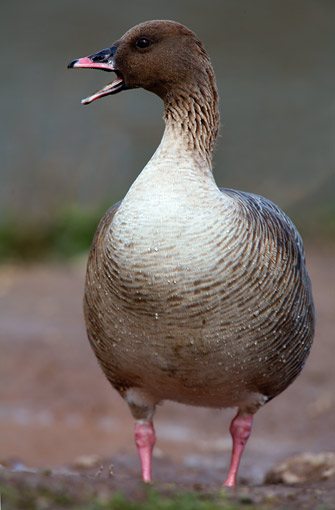

The Pink-footed Goose (Anser brachyrhynchus) has had increasing conflict with humans and their agriculture. With an estimated population size of about 70,000 individuals, the geese tend to remain on wintering grounds feeding on cereal grains such as wheat. This has become an optimal food source since it is easily accessible and is reliable to be around in winter whereas their previous food preferences Poa (Poa sp.) is not as easy to obtain. This new availability of wheat has caused increase in range, a population growth and has created crop damage. But even with this population growth it is not attributed to having better nesting success, it is just the geese are being able to survive longer. With the increased agricultural use of the land, the geese are now having to find new areas to go to, and therefore are losing previously suitable habitat.
Since the conflict, the AEWA has planned on making this the first official conservation case to see if they can solve the issue. This is because the pink-footed goose is having issues with human economic activities, mainly agricultural lands, yet does not have very large population sizes. Since the population is under 125,000 this agreement believes is suitable enough for a population, they are taking special care of the Pink-footed Goose when it comes to the agricultural conflict. For this species, the African-Eurasian Waterbird Agreeement has four main goals, to maintain sustainable Pink-footed Goose populations, decrease agricultural conflicts, avoid degradation of the tundra and lastly to allow recreational use around the geese, but not allow it to create conflict with the goose.

No comments:
Post a Comment